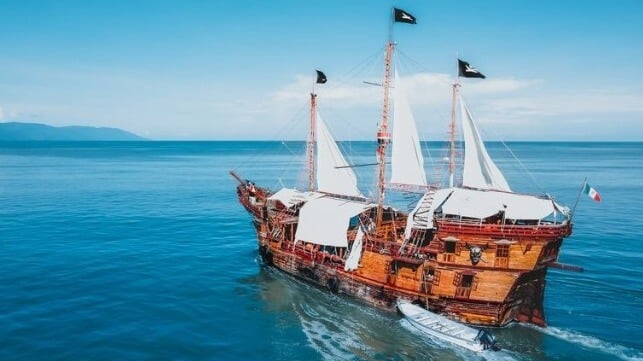Orders for new containerships have remained strong and, despite the market uncertainties, are continuing to build. A new update from market intelligence firm Linerlytica highlights the growth in orders while also saying it is raising concerns.
The major carriers are the ones topping the orderbook. MSC Mediterranean Shipping Company, for example, despite already being far ahead of its competitors, has orders totaling as much as a third of its current capacity. CMA CGM is over 40 percent of its current capacity, as is Ocean Network Express (ONE). COSCO and Evergreen are each above 30 percent of their current capacity.
Linerlytica calculates the total orderbook stands at a record high of 10.4 million TEU of capacity following a flurry of orders in the past 12 months. Other calculations, such as Alphaliner, have set the total capacity for orders slightly lower, approaching 10 million TEU, but the orders continue to build, with more rumored to be in negotiations. Linerlytica reports current orders represent 31.7 percent of the global fleet capacity.
“It’s the highest level since 2010,” they write in the update. “The last time the orderbook ratio exceeded this level in 2004-2009, it ended in a decade-long supply overhang that took 10 years to clear,” warns Linerlytica.
Some of the carriers have said they are building fleet replacements. Maersk, for example, has orders at nearly 20 percent of its capacity. Last year, it said its focus was on modernization and fleet replacement. It declared an intent to remain near its current 4.6 million TEU capacity.
The sector is booming at the moment, although from the recent financial reports, it remains under pressure due to rising costs and uncertainty for freight rates. Linerlytica points out that just 0.3 percent of the global fleet is idle currently. It said there were 19 new vessels delivered in the past 30 days, adding 184,000 TEU of capacity, while just three vessels with 3,000 TEU of capacity were removed from operations.
The expansion is against a backdrop of the ongoing U.S. tariff wars and a vacillating near-term strategy on tariff implementation. The closing of the Red Sea and Suez Canal route has kept capacity demand high, but now analysts question the impact of the U.S. tariffs, planned U.S. port fees on Chinese-built ships, and the overall health of the global economy.
Linerlytica highlights that there is an additional 1 million TEU of capacity due to be added before the end of this year, but that the pace will slow. The first surge came with the orders placed during and after the pandemic, but then there was a lull, which will be reflected in a slower pace of additions in 2026 and 2027.
The orders placed in this latest surge will begin to enter the industry in 2028 and 2029. While more of the ships are dual-fuel or designed for alternative fuels, the industry will also be faced with the need to take more aggressive steps to respond to the new environmental regulations. That creates the possibility that portions of these future deliveries will be fleet replacements for older ships, but Linerlytica highlights the orderbook is a cause for concern.
source: www.maritime-executive.com









